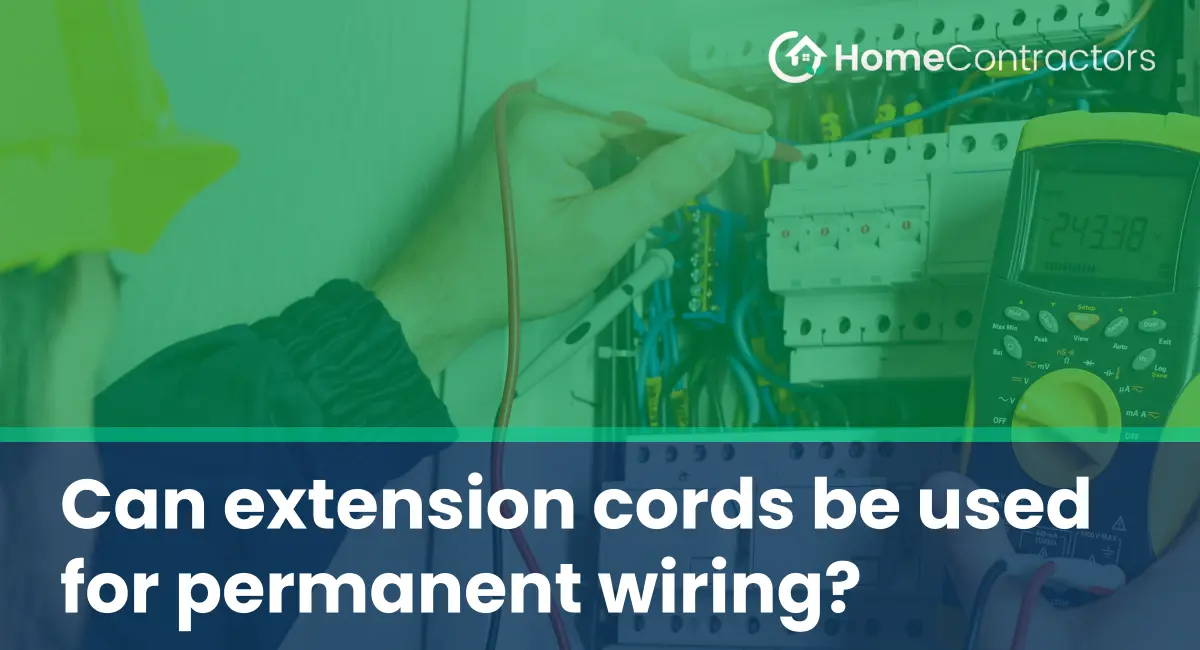Extension cords are versatile tools that allow us to conveniently connect electrical devices to power sources. They provide flexibility and convenience in situations where permanent wiring may not be feasible or necessary. However, when it comes to using extension cords for permanent wiring, there are safety concerns and code violations that need to be considered. In this article, we will explore the risks and drawbacks associated with using extension cords for permanent wiring, as well as the alternative solutions available.
The Hazards of Using Extension Cords for Permanent Wiring
Fire Hazards
One of the biggest concerns associated with using extension cords for permanent wiring is the risk of fire hazards. Extension cords are designed for temporary use and are not built to handle the constant load that permanent wiring requires. Overloading an extension cord with a high-powered device or multiple devices can lead to overheating, which may ignite a fire.
Tripping Hazards
Extension cords can also pose a tripping hazard when used for permanent wiring. Unlike permanent wiring, extension cords are not typically secured in place and can be easily moved or kicked, increasing the risk of accidents. This is especially problematic in areas with high foot traffic, such as hallways or staircases.
Code Violations
Using extension cords for permanent wiring can also result in code violations. Building codes typically require proper installation and compliance with safety regulations. Using extension cords as a substitute for permanent wiring might violate these codes, resulting in fines or delays in obtaining occupancy permits.
Alternative Solutions
Considerations for Permanent Wiring
When planning for permanent wiring, several considerations should be taken into account. It is crucial to assess the power requirements, the distance to the power source, and the type of equipment or devices that will be connected. Proper calculations and measurements need to be made to determine the appropriate wire size, circuit capacity, and outlets required.
Power Strips and Surge Protectors
If additional outlets are needed in specific areas, power strips or surge protectors with built-in circuit breakers can be used as a temporary solution. These devices provide a safer alternative to extension cords by distributing power and protecting against electrical surges. However, it is important to remember that power strips and surge protectors are not designed to replace permanent wiring in high-power demand situations.
Installing Additional Outlets
For long-term and high-power demand situations, installing additional outlets is the most appropriate solution. Hiring a licensed electrician ensures that the wiring is properly installed and complies with building codes and safety standards. While this may require more time and investment upfront, it provides a safer and code-compliant solution in the long run.
Using extension cords for permanent wiring is highly discouraged due to the increased risk of fire hazards, tripping hazards, and code violations. While extension cords provide convenience for temporary use, they are not designed to handle the constant load that permanent wiring requires. Alternative solutions such as installing additional outlets or using power strips with surge protectors should be considered for permanent wiring needs. Prioritizing safety and compliance with building codes should always be the top priority to ensure the well-being of individuals and the integrity of the electrical system.
